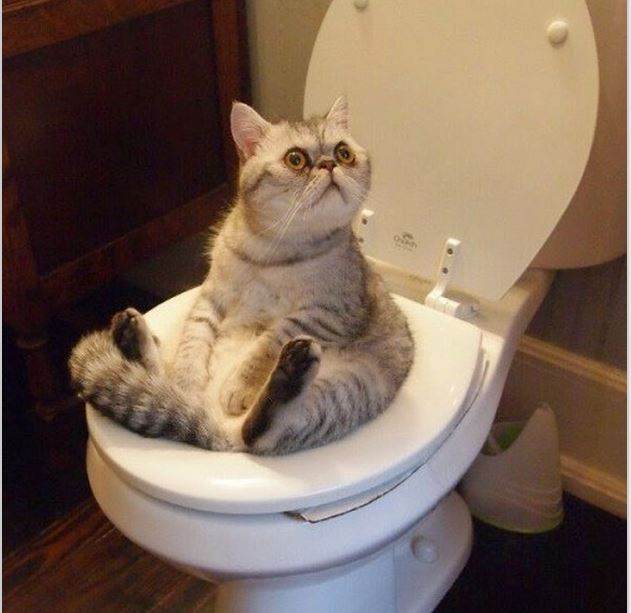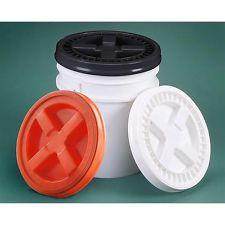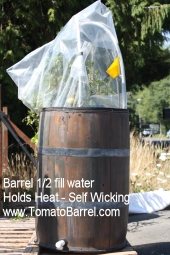Sustainable Living Center in Oregon is trying to develop a system to eliminate domesticate animals waste.
Cats and dogs generate a very large amount of animal waste. Most owners are responsible. They pick up after their animals and want to safely dispose of the waste. But where?
Mr. Frenchie, our cat, is the test subject. This is not a picture of Mr. Frenchie, but it illustrates the point. Mr. Frenchie's waste is put into a bucket and not the potty.
Mr. Frenchie's Potty Bucket is a fermenting system to transform his waste into a product that restores nutrients and microbes to the soil for ornamental plants is the better simple choice, not the garden.
It:
Eliminates animal waste odor
Reduces ground water run-off contamination
Diverts animal waste away from the landfill
Reduces greenhouse gas production
Rapidly metabolizes animal waste to nutrient and microbial rich soil for ornamental plants
Eliminates methane production in an acidic anaerobic process
Removes the risk of toxoplasmosis and other parasites getting into municipal water supplies
Safe and easy to employ
We are testing a fermenting system to use Mr. Frenchie waste as oppose to normal composting methods. We use what is called Bokashi Composting.
What is the Bokashi Composting System?
Bokashi is a Japanese term meaning ‘fermented organic matter’. It is often referred to as a type of ‘composting’ but it is actually a two-stage process. There is a fermentation stage, and a composting stage. The fermentation stage results are much different end product than that produced via composting. It is process where a person is fermenting their animal'sl waste.
Many people like Bokashi system because it is very easy, and produces no bad odors, however, it does have an odor. The smell can be strong, but is not putrid.
All that is needed is a Bokashi Bucket and lid, some special Bokashi Mix, and of course some of Mr. Frenchie waste.
Animal Waste
Animal waste left on the ground surface is not an acceptable option. Even if the waste is buried, it will take a long time to decompose. Microbes in the soil cannot so rapidly breakdown the waste unless it has been altered by fermentation.
Animal waste on the ground surface or buried provides a ready path of potentially dangerous organisms and parasites traveling with the water run-off to larger reservoirs of water that are readily polluted.
Collecting animal waste in plastic bags that are then sealed and deposited in cans that are then taken to the landfill guarantees the waste will be retained deep in the ground to release methane for years in a repository of plastic polymers. We need to keep the waste out of the landfill.
Animal waste attracts flies, is smelly, and loaded with lots of microbes that can cause problems.
Bokashi Bucket
A Bokashi Bucket is a bucket that has a air tight lid to keep oxygen from slipping into the bucket.
Bokashi Mix
The key component of a successful Bokashi Bucket is the Bokashi mix and Accelerant Concentrate.
It typically consisting of wheat bran inoculated with a special mixture of microbes variously referred to as ‘effective microorganisms’, ‘friendly microorganisms’, or ‘efficient microorganisms’.
The Accelerant Concentrate
It is a liquid concentrate form of the Mix.
The Process
Once you have the animal waste, bucket and mix you are ready to get started.
Mix 1 cup of Accelerant Concentrate with 2 gallons of water to the Bokashi Bucket so that the concentrate is diluted.
Spritz 3 puffs of the diluted accelerant mix after each addition of pet waste, before closing the fermenter to insure fermentation conditions are optimal.
Each time you open the fermenter to add pet waste, also add 3 teaspoons of Bokashi Mix and spritz 3 puffs of diluted accelerant over the deposited waste.
Close the lid tightly to exclude oxygen.
One gallon of Bokashi Accelerant Concentrate is enough to make up approximately 16 complete cycles.
Fill the Bucket about 1/2 full with water. Add a cup of the accelerant and a sprinkle of the mix in the Bokashi Bucket. Then scoop the waste into the bucket and close it up. A 3.5 gallon can handle about 20 lbs of animal waste at a time. The microbes will kill pathogens, break down the waste, and eliminate most of the odors efficiently
Mr. Frenchie's Prototype Potty System
The Sustainable Center is now starting a Mr. Frenchie's Prototype Bokashi Study.
Certain members of the local community with animals have been invited to participate in this study. We furnish the Bokashi Bucket and Mix. They bring their bucket to the Center whenever it is full. There is no charge or obligation on their part.
Where to get the Bokashi Bucket?
People pick up their Bokashi Bucket from The Sustainable Living Center 6349 S Hwy 101 in Lincoln City, Oregon
What happens to the Bucket?
The bucket with the fermenting animal waste now goes through the composting stage. The composting stage consist of just burying it in the soil. Two weeks later the process in done and the place where it is buried is ready to grow trees, shrubs and ornamental plants. Mr. Frenchie, as shown in this picture, keeps on enjoying life as a contented cat.
Sustainable Living Center
6349 S Hwy 101
Lincoln City, OR 97367
541-921-7007
Info@sustainablelivingproducts.org

















 1
1












